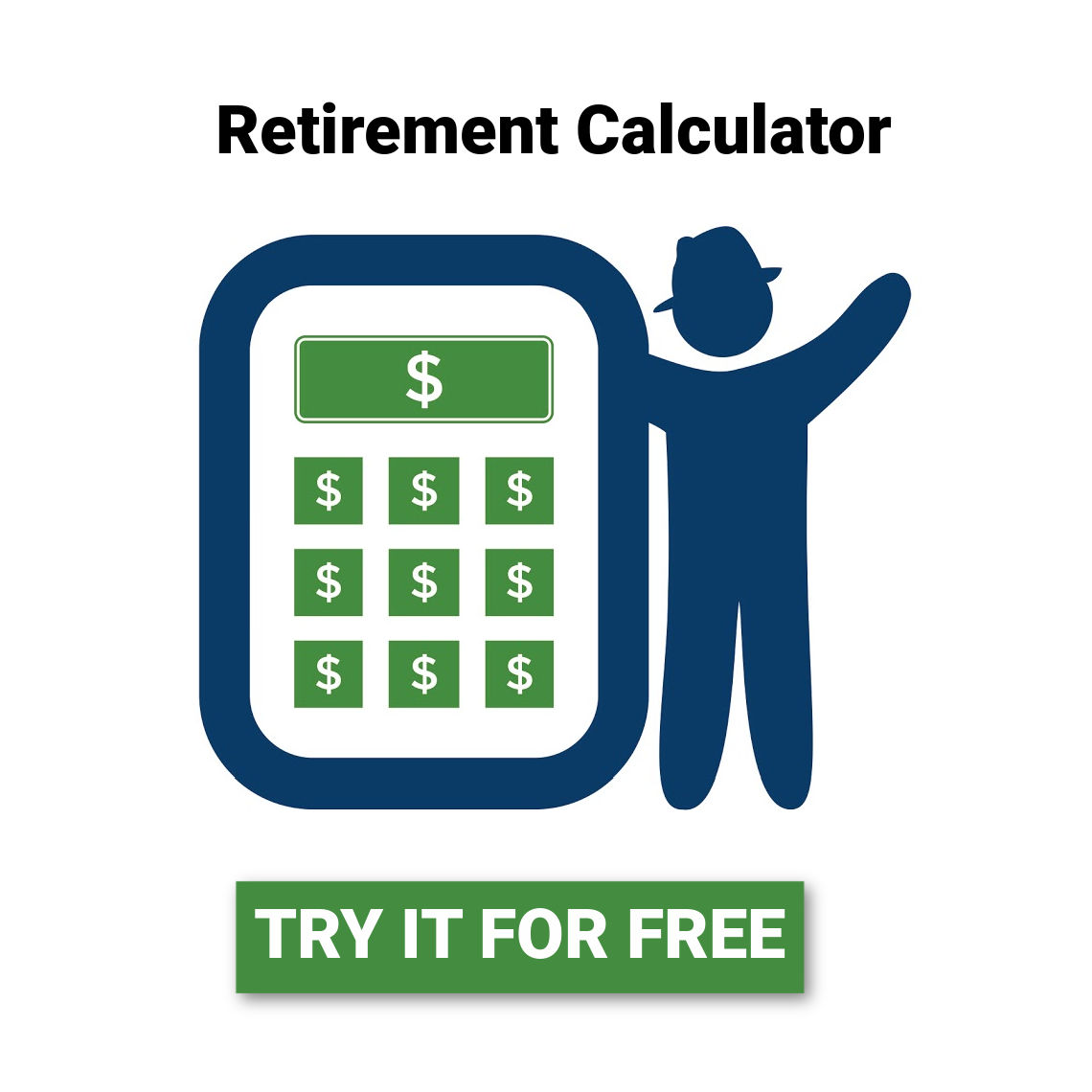In today’s podcast episode,
Health savings accounts are the most incredible tool available for retirement savings. Unfortunately, too many people I meet are missing out on using HSAs as part of their retirement strategy. We are going to do a deep dive into HSAs, but…
As we dive into this topic of health savings accounts, I want to start at a high level and then dive into more of the specifics and some strategies for you to consider.
Health Savings Accounts have only been around since 2003. According to a report by KFF.org, enrollment in HDHPs with a savings option has increased from 20% in 2013 to 29% in 2023, and of those, about 24% are enrolled in an HSA. When comparing HSAs to other types of retirement accounts, I found that 40% of US households own an IRA, and more than 70% of households have retirement plans through work. I would like to see an increase in our HSA enrollment numbers.
If you enjoy todays podcast be sure to share it with a friend and leave us a 5 star review.
The Retirement Budget Calculator is an intuitive tool that promises ease and accuracy. However, like any tool, user error could potentially lead to costly mistakes. To avoid this, let the experienced advisors at Parker Financial LLC guide you.
When you hire our team, we offer a comprehensive review of your current investments, taxes, and the data in the Retirement Budget Calculator. We will ensure your plan’s completeness and accuracy, helping you create an investment strategy, assist with tax planning, and monitor your plan to maximize your retirement benefits.
At Parker Financial we offer a well-crafted retirement investment strategy, deeply rooted in academic research and financial science which can be the key to a prosperous retirement.
Don’t leave your future to chance. Take the first step towards a sound retirement. Schedule your complimentary discovery session now by visiting Parker-Financial.net let us help you make the most of your retirement years.
Articles, Links & Resources:
BLS.gov Stats on HDHP and HSAs
Fidelity – Retiree Health Care Costs
Forbes – New HSA contribution limits announced
Morningstar – The Best HSA providers
HealthCare.GOV – Understand how HDHP and HSA work together.
ICI.org – The role of IRAs in America
Transcript:
Health savings accounts are the most incredible tool available for retirement savings. Unfortunately, too many people I meet are missing out on using HSAs as part of their retirement strategy. We are going to do a deep dive into HSAs, but…
As we dive into this topic of health savings accounts, I want to start at a high level and then dive into more of the specifics and some strategies for you to consider.
I’ve compiled a bunch of resources and links to other articles that you will find helpful in the show notes. Just visit episode 430.
Health Savings Accounts have only been around since 2003. According to a report by KFF.org, enrollment in HDHPs with a savings option has increased from 20% in 2013 to 29% in 2023, and of those, about 24% are enrolled in an HSA. When comparing HSAs to other types of retirement accounts, I found that 40% of US households own an IRA, and more than 70% of households have retirement plans through work. I would like to see an increase in our HSA enrollment numbers.
What is an HSA?
An HSA is a special account where you can save money for medical expenses without paying taxes on it. To have one, you need to meet certain eligibility criteria.
How do you qualify for a health savings account in 2024?
- You are covered under a high deductible health plan (HDHP).
- You have no other health coverage. There are some nuances here that are pretty complex, so refer to IRS publication 969 if you have questions. Generally, you can’t have any other health coverage.
- You aren’t enrolled in Medicare.
- You can’t be claimed as a dependent on someone else’s tax return.
What are the benefits of an HSA?
- You can claim a tax deduction for contributions you, or someone other than your employer, make to your HSA even if you don’t itemize your deductions on Schedule A (Form 1040).
- Contributions to your HSA made by your employer (including contributions made through a cafeteria plan) may be excluded from your gross income.
- The contributions remain in your account until you use them.
- The interest or other earnings on the assets in the account are tax-deferred.
- Distributions may be tax-free if you pay qualified medical expenses.
- An HSA is “portable.” It stays with you if you change employers or leave the workforce.
- If used for qualified medical expenses, the money comes out tax-free, and unlike an IRA, you don’t have to wait until age 59.5 to start using the money penalty-free. As long as the money is used for qualified medical expenses, you can access the account with no penalties or taxes.
So in essence, you get the benefits of the tax deduction from an IRA and tax-free income like a Roth IRA. It combines the best of all worlds:
- Tax deductions.
- Tax-free income when taking money out for qualified medical expenses.
- It is more liquid than an IRA because you don’t have to wait until age 59.5 to access the money without a penalty.
- Unlike an IRA, there is no Required Minimum Distribution (RMD), so you will not be forced to take withdrawals at age 73.
- Money in an HSA is carried over to future years.
- If the HSA is being offered through your employer, it is a portable benefit, meaning that you can take the HSA with you if you leave your job. This makes the HSA unique compared to other health care savings accounts such as FSA or HRA.
Please note that HSA is different and, in my opinion, better than the FSA or HRA that many people have through their employer. But because there are these other types of accounts, it can be confusing:
- HRA stands for Health Reimbursement Arrangement.
- FSA stands for Flexible Spending Account.
So why would you want an HSA? There are several reasons:
- Fidelity’s recent Retiree Health Care Cost Estimate states that on average a 65-year-old couple will spend about $315k on health care costs in retirement, not including costs for long-term care. So we need to plan on how to pay for health care in retirement. If we only have money saved in IRA or 401k accounts, we will have to pay taxes on every dollar we pull out, even if those dollars are for health-related expenses.
- Health insurance is expensive. I don’t know about you, but I get zero joy from spending money on health insurance, but it does provide me peace of mind. If you are healthy and don’t spend a lot on health care and medical costs every year, an HDHP helps you keep your insurance premium expenses low. With insurance, I want as much as I need but not a penny more.
- The HSA is an account that can be invested for long-term growth. But not all HSA providers have investment options.
- Because dollars contributed to an HSA offer a tax deduction, it helps you pay less money in taxes every year. Unlike Roth IRA contributions, high-income individuals don’t get phased out of these contributions.
So a question would be if these HSA accounts are so good, why are only 24% of Americans using them?
Well, with this podcast, I hope to change that. I hope HDHP and HSA become one of the most utilized retirement accounts. Be sure to share this episode with people you care about so that they can pay less money in taxes, pay less money for health insurance, and build up a pot of money they can use for medical expenses and take money out tax-free when needed to cover qualified medical expenses.
Choosing Health Insurance:
Now there is a lot that needs to be considered with which health insurance plan you will choose. If you know that you are going into a season of life where you are planning on higher medical expenses, such as maybe you are planning to start a family or you are planning for some type of surgery, then it might make more sense to choose a low-deductible health insurance plan.
What are the requirements for the HDHP to qualify as HSA eligible:
- A high deductible health plan in 2024 requires a minimum deductible of $1,600 for self-only coverage and a maximum out-of-pocket of $8,050.
- Family coverage needs a minimum annual deductible of $3,200 with a maximum out-of-pocket of $16,100.
- You cannot be enrolled in any other health insurance.
- You cannot be enrolled in Medicare.
- You cannot be claimed as a dependent on someone else’s tax return.
Comparing Plans:
I recently visited the WA state health plan finder website to compare plans. I looked at a few offerings in my state and in my county. I assumed a married couple both age 40. A low-deductible plan vs. an HDHP that was HSA qualified.
When comparing the low deductible plan to the HDHP HSA qualified plan:
If I purchased a health insurance plan from Regence with a low deductible of $600 per individual or $1200 per family, the estimated monthly premium was $1,424.74 per month. An HDHP health insurance plan from Premera had a $6,400 individual deductible / $12,800 family deductible, and the premiums were $1,148.40 per month. As you can see, the HDHP plan would save you $276.34 per month in health insurance premiums. But in the event that a major medical event happened for an individual, the deductible is $6,400 with a max out-of-pocket cost of $7,200. Whereas the lower deductible plan would have a deductible of only $600 for an individual with a max out-of-pocket of $6,100. The premium savings of the HDHP is $3,316 per year. Assuming you don’t have any major medical issues, you can save the difference in premiums and enjoy tax breaks for making a contribution to an HSA and also enjoy tax-free growth of your HSA account.
The monthly cost savings was $276 per month for the HDHP compared to the low-deductible plan. If you choose the HDHP with the HSA in this scenario, you have now freed up over $3,000 per year that you would have otherwise been sending to the insurance company every year had you selected the lower deductible plan.
Because you have a qualified HDHP that is HSA-friendly, you are now eligible to contribute to an HSA. In the year 2024, the HSA says you can contribute up to $4,150 for an individual or $8,300 per year for a family. If you are over the age of 55, there is a $1,000 catch-up contribution. And one of the great things about the HSA is, unlike other types of tax-advantaged savings, there are no restrictions or limitations on earnings.
So now that we see we can save money on health insurance premiums:
Let’s consider the tax benefits of signing up for an HSA:
Our national debt is over $34 trillion. We are creating and spending money like there is no tomorrow. We currently have all-time low tax rates. Will they be going lower? Or is it possible that taxes will be increasing in the future? We are going to look at how a contribution to an HSA would work today if you set up an HSA and if you believe taxes could be going higher in the future, it could make the tax-deferred growth and tax-free benefits of the HSA that much more valuable in a future where taxes could be higher.
I like the idea of maxing out the HSA and, if possible, not spending the HSA as you go. Rather, create a great big bucket of tax-free money for future health care costs. As we dive into taxes, remember taxes are like fingerprints. Each person’s situation is very unique to you. Please understand that this is a hypothetical situation. You will want to check with your financial advisor or CPA for the specifics on how taxes will affect your situation. This is hypothetical, and taxes are complicated, so please don’t assume this is how it works for you. But in this make-believe scenario, I created two very simple tax returns.
Let’s say we have our hypothetical couple that is 40 years old, and between the two of them, they are making $150k per year. We will assume they take the standard deduction and do not itemize. Total federal tax, assuming they have no HSA, is $16,682 (22% marginal bracket with an effective tax rate of 13.8%). If we kept everything the same but added the max HSA contribution of $8,300 in 2024, their total federal tax would be $14,856, for a tax savings of $1,826.
So in this hypothetical example, not only did this couple pay $3,000 less in insurance premiums as a result of having the HDHP, but they also paid $1,826 less in taxes as a result of contributing $8,300 to their HSA.
So the annual savings between insurance and taxes is $4,826 per year.
Now let’s look at how much money they could have in the future:
Let’s say this 40-year-old couple plans to retire at age 62. If we assume they save $8,300 in their HSA per year for 22 years and never increase the savings with inflation adjustments or catch-up contributions, and let’s say they invest that $8,300 per year from age 40 to 62 and we assume the investment account grows at 5% per year. In 22 years, they would have nearly $344,000 available in their HSA that can be used tax-free to pay for future medical costs. If the HSA grows at 7% per year, they would have approximately $443,000.
If the cost of medical care today for a retired couple is $300k over a couple’s retirement, you figure in 20 years that will likely double to about $600k. And if you had made the $8,300 contribution every year for the next 22 years and earned 5% investment returns each year, you would have $300k available to cover the expenses, and hopefully not all of the medical expenses are going to occur in the first year of retirement. You now have a $300k account that will continue to work and grow and be there for you to cover most of your medical expenses in retirement. The key is you must get started.
Catch-Up Contributions:
Most people know that starting at age 50, you can do catch-up contributions to your 401k and IRA. Well, our lawmakers like to keep us on our toes, and they decided to make catch-up contributions for the HSA start at age 55. If you and your spouse are age 55 and both have qualified HDHP coverage in 2024, you can contribute $8,300 to an HSA plus an additional $1,000 per person. A lot of people miss the extra catch-up contribution. I see a lot of tax returns of people aged 55 plus who are both covered under qualified HDHP and have an HSA account, and they think they are making the max contribution because they do the $8,300 plus an extra $1,000 for a total of $9,300. I can see this on the tax return. The couple can actually make a total contribution of $10,300 because they get $1,000 per person of catch-up contributions. But for this to work, the spouse needs to have their own HSA account to make the catch-up contribution. There is no such thing as a joint HSA. If you only have the one HSA, then it would be $8,300 as the family max plus $1,000 for the person who owns the HSA. But if your spouse has their own HSA account, you can contribute an extra $1,000, making the total contribution for those where both spouses are over age 55 $10,300 per year in 2024.
There are several other nuances you need to be aware of:
- If your employer contributes to your account, it reduces the amount of the contribution you can make. So if you are 40 years old, the max contribution is $8,300 in 2024. But if your employer contributes $1,000 on your behalf, then the most you could contribute would be $7,300.
- You can have more than one HSA, but the maximum contribution is limited to the annual max.
Coordinating HSAs Among Couples:
Both couples have Self-only:
- If a husband and wife each have a self-only HSA account, they are limited to the annual max of $4,150 per person. So if the wife maxes out her HSA, for say $4,150 for the year, the husband would need to max out his HSA for $4,150. But let’s say the husband decides to buy a boat and does not want to max out his HSA. Instead, he contributes zero dollars. Unfortunately, $4,150 is the most that can be contributed by the wife. She cannot make up the extra contribution for her husband when each person has self-only coverage.
One person has a family HDHP, and the other has a self-only:
- In a scenario where the wife is covered under the family plan and the husband is covered under the self-only plan, if the family max is $8,300, they could each contribute $4,150 just like in the last scenario. But just like before, let’s say the husband buys the boat and contributes nothing to his HSA. Well, because the wife has a family plan, she is not limited to only contributing the $4,150. She can actually make up for the lack of contributions her husband did not make, and she can contribute the full $8,300 because she has a family plan.
- Or they could mix and match. Let’s say the husband contributes $1,000 to his HSA, then his wife could contribute an additional $7,300 to the family plan to get them up to the max of $8,300.
If this all seems confusing, be sure to visit episode 430, and I will have links to articles for your additional reading pleasure.
Investment Growth:
There is no guarantee that your money will grow inside an HSA. Some HSA accounts work like a traditional savings account at the bank and pay very little interest. Many HSA accounts offer investments where you can buy stocks, bonds, mutual funds, and ETFs.
Accessing the Money for Non-Medical Purposes:
If you access your HSA and use the money for non-qualified/non-medical distributions, then you get hit with a 20% penalty if it’s before the age of 65, and the distribution counts as ordinary income. If you become disabled or are age 65, you can access your HSA without the 20% penalty, but it still gets taxed as ordinary income, just like if you are taking money out of a traditional IRA. You lose the tax-free benefit, but you can still access the funds for non-medical reasons. It’s like a traditional IRA, but you don’t have to take an RMD.
What Can You Spend Your HSA Account on Tax-Free:
Qualified medical expenses are those expenses that would generally qualify for the medical and dental expenses deduction. You can find more details on these via IRS publication. After 2019, over-the-counter medication (prescribed or not) is considered a covered expense. Medical expenses incurred before you establish your HSA aren’t qualified medical expenses. This is an important reason to get your HSA established ASAP. You might be surprised by what qualifies for medical expenses:
- Certain improvements made to accommodate a home to your disabled condition, or that of your spouse or your dependents who live with you, don’t usually increase the value of the home, and the cost can be included in full as medical expenses. These improvements include, but aren’t limited to, the following items:
-
- Constructing entrance or exit ramps for your home.
- Widening doorways at entrances or exits to your home.
- Widening or otherwise modifying hallways and interior doorways.
- Installing railings, support bars, or other modifications to bathrooms.
- Lowering or modifying kitchen cabinets and equipment.
- Moving or modifying electrical outlets and fixtures.
- Installing porch lifts and other forms of lifts (but elevators generally add value to the house).
- Modifying fire alarms, smoke detectors, and other warning systems.
- Modifying stairways.
- Adding handrails or grab bars anywhere (whether or not in bathrooms).
- Modifying hardware on doors.
- Modifying areas in front of entrance and exit doorways.
- Grading the ground to provide access to the residence.
You are going to want to be careful about coordinating your tax return and your HSA spending:
- You can’t deduct qualified medical expenses as an itemized deduction on Schedule A (Form 1040) that are equal to the tax-free distribution from your HSA. So no double-dipping.
- You cannot treat insurance premiums as qualified medical expenses unless the premiums are for any of the following:
These are the areas you can use HSA accounts for insurance premiums:
- Long-term care insurance – subject to limits based on age.
- Health care continuation coverage such as COBRA.
- Health care coverage while receiving unemployment benefits.
- Medicare Part A, B & D premiums or Medicare Advantage plans but not Medicare supplement plans known as Medigap coverage.
No Income Limitations:
One of the nice things about the HSA is that there are no income limitations on who can have these accounts. If you are considered to have high income, you get phased out of a lot of tax deductions and can no longer make Roth IRA contributions. But that is not the case with HSAs. This is one of the few special tax deductions that you don’t lose due to having a high income.
Who is the Best HSA Provider?
Morningstar did an analysis of HSA providers in 2023. I will include a link to the article in the show notes, but here is a quick summary of their findings:
- The top 3 HSAs as spending accounts were Fidelity, First American Bank & Health Equity.
- The top 3 HSA providers as investment accounts were Fidelity, Health Equity, and Associated Bank.
I will include a link in the show notes if you want to look at the pros and cons of the various HSA providers. My personal favorite is Fidelity. Fidelity offers a low-cost option with a ton of investment options and a debit card for easy payment of medical expenses.
What Happens to My HSA When I Die?
HSAs, while incredible while you are alive, are not very tax-friendly upon death. So this is an account that we want you to spend. Often times, people can rack up a lot of medical expenses their last year of life. One of the great things about the HSA is that proceeds can be used to pay these medical expenses up to 12 months after the HSA owner’s death. So you want to make sure you are talking to your family about these HSA accounts. If your spouse is named as the beneficiary of the HSA, they can continue the account as if nothing really changed. If they are under age 65, they can use the money for medical expenses without paying taxes. If your spouse is over 65, they can spend the money on anything, not just medical expenses. But if you aren’t spending it for a qualified medical expense, it will be taxed as income at your then-current tax rate.
If you name your kids as beneficiaries or any other non-spouse beneficiaries, this triggers a tax hit. All of the HSA becomes taxable in the year of death on the kids’ tax return based on the kids’ tax situation.
You can name your estate as the beneficiary, in which case there is a special rule that says the HSA is included in the HSA owner’s final tax return. This might be the better strategy if your estate is in a lower tax bracket than your kids or other beneficiaries would otherwise be in.
If you name a charity the beneficiary of your HSA, then the tax issues go away.
Strategies Around HSA:
Accumulated Health Expenses:
Once you get your HSA established, keep all receipts and try not to spend your HSA account. Keep receipts for all health care expenses using a tool like Evernote or Google Drive, and create a table or spreadsheet to track expenses. Then take pictures of the receipts to include with the spreadsheet. Let’s say you do this from age 40-62 and you have an HSA the entire time. So you are tracking your health care expenses but not using the HSA as you go. And then you retire at age 62. And then let’s assume over that 22 years you had $66,000 of health care costs. You never itemized these costs on your tax return, and you never used your HSA to pay for these expenses. These are just your accumulated costs from over the years.
But during that time, you did not spend from your HSA. So those costs have never been reimbursed. You decide to retire at age 62, and let’s say that your budget the first year of retirement requires $66k just for simplicity. The year of retirement, you could reimburse yourself for all 22 years of medical expenses incurred and have $66k of tax-free income. Because all of this income is tax-free, it would open the door for you to consider doing a Roth conversion. Or maybe instead of taking all of the tax-free reimbursement income in one year, you spread the $66,000 over five years and help keep your income low to allow for Roth conversions or to help keep your income low so that you qualify for the Affordable Care Act tax credits because HSA reimbrusements do not count toward your MAGI which means you may qualify for higher ACA subsidies to help cover health insurance costs until you turn age 65 and Medicare starts. It is very important to have impeccable record-keeping for this strategy to survive an audit.
Let’s say you plan to retire at 63.5, and you are eligible for COBRA for 18 months. Remember, HSA generally cannot be used to pay for private insurance once you retire, but the funds could be used tax-free to pay your COBRA for those 18 months leading up to age 65 retirement. Remember, once you are on Medicare, you can use your HSA to reimburse Medicare Part B and Part D premiums. So even though your Part B premium will likely be automatically deducted from your Social Security, you can reimburse yourself tax-free for the cost of Medicare Part B and D.
Review your beneficiaries and consider naming your spouse as the primary beneficiary so they can continue to enjoy the HSA for tax-free health care expenses after you pass on.
Consider naming your favorite charity as a contingent beneficiary to help reduce taxes once you have both died.
The IRS says anyone can contribute to an HSA, so one idea is parents fully fund HSA for adult kids. This is a triple benefit. Kids get to enjoy a tax deduction, kids have cash available for medical expenses, and the money grows tax-free for future needs. Helping fund the HSA might help pay for the costs when your first grandchild is born and help keep your adult kids out of medical debt.
The HSA says that once you reach age 65, you can take money out of the account without the 20% penalty. So one strategy would be to prioritize HSA contributions to the older spouse so that funds become available without a penalty at age 65 if needed.
Consider a qualified HSA funding distribution. The IRS gives you a one-time opportunity to transfer funds from your IRA to your HSA without any tax. This is almost like doing an IRA to Roth conversion, except it is tax-free. You are getting money out of your tax-hostile IRA and into an HSA account where the money can come out tax-free. The two best times to consider a qualified HSA funding distribution would be when you are young and getting started, and you don’t have the extra money to make a contribution to an HSA, but you have money in your traditional IRA. This gives you a longer time period for that money to grow and compound tax-deferred and be used tax-free.
The second time to consider doing a one-time transfer would be after you and your spouse are both age 55 or older. This way, you can transfer the family maximum plus the extra $1,000 per person catch-up contributions. The distribution from your IRA isn’t included in your income, isn’t deductible, and reduces the amount that can be contributed to your HSA. It is important to understand that a qualified HSA funding distribution needs to be done via direct transfer from custodian to custodian and has a testing period. This means that if you don’t follow the rules, there are consequences and penalties.
In summary, an HSA is one of the best but most overlooked retirement plans available.
They are best for people who do not have a lot of health care costs every year and have the money to make the maximum contributions to an HSA. They have triple tax advantages in that your contributions are tax-deductible, earnings grow tax-free, and withdrawals for qualified medical expenses are tax-free. You enjoy lower health insurance expenses compared to a low-deductible plan. You get tax deductions for contributions, tax-free growth, easy access to the money before age 59.5, you can have investment opportunities for long-term growth, and a plan to cover health-related expenses in retirement. Unlike a traditional IRA, there are no RMDs, and after age 65, you can access the money for non-medical expenses without the 20% penalty. You can delay reimbursements and allow your HSA to grow tax-free and then take a tax-free lump sum in the future. And once you turn age 65 and start Medicare, you can use your HSA to reimburse the costs of Medicare Part B and Part D or pay for Medicare Advantage plan premiums.
If you do not currently have an HSA, I highly recommend you visit episode 430 to start to review all of the resources and links I’ve made available for your review.
The HSA is a powerful tool that can provide significant benefits for retirement planning and healthcare expenses. However, it’s important to remember that the rules and regulations surrounding HSAs can be complex and require careful consideration.






